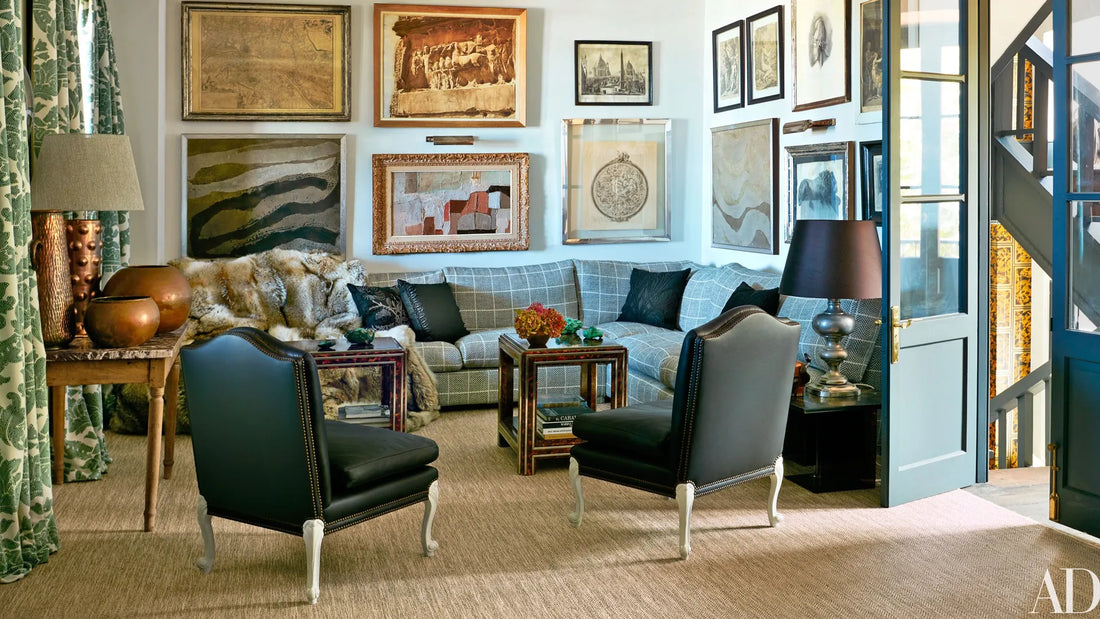
The Case for Imperfection: Why Patina Is the New Luxury
Let’s be honest: perfection is exhausting. It’s sterile. It’s soul-crushingly symmetrical. And when it comes to interiors, it’s also a little… boring.
We’ve been sold a lie: that luxury means pristine, untouched, showroom-perfect everything. That real wood shouldn’t scratch, linen shouldn’t wrinkle, and silver should never tarnish. But here’s the truth (lean in): patina is the new luxury. And those scuffs, nicks, and worn edges? They're stories, not flaws.

image credit: Ricardo Labougle
❝ Why are we so afraid of things that look lived in? ❞
In a world drowning in mass-produced sameness, patina is proof of character. It’s texture with a backstory. It’s what happens when something survives trends, moves houses, and still manages to look cooler than all your new stuff combined.
Think about it:
The brass handle that’s softened with a century of hands
The ceramic bowl whose glaze has crazed just so
The oak chair with the seat worn smooth from use, not factory distressing
These aren’t imperfections. They’re design flexes.

image credit: Marc Anthony Fox
The Patina Advantage: Why You Actually Want a Little Wear
-
It Hides Your Life
That vintage coffee table with the beat-up edges? It’s not going to cry when your kid drops a truck on it. In fact, it’ll look even better. -
It’s One-of-a-Kind
No two pieces age the same way. A vintage rug that's slightly faded in the middle? That’s nature’s gradient. You can’t buy that kind of depth at a big box store. -
It Pairs with Literally Everything
Old finishes play well with modern design. Patina adds grounding. It’s like eyeliner for your minimalist room—everything just pops more. -
It Signals Real Luxury
In fashion, we’ve accepted the idea of quiet luxury—cashmere over logos. In interiors, patina is the design equivalent. It whispers, “I have good taste and better stories.”
Vintage Is the Original Sustainable Luxury
Beyond aesthetics, there’s a deeper case: buying old is better for the planet. The most sustainable object is the one that already exists. Every pre-loved vase, dented breadbox, and scratched table you bring home is one less item headed to landfill—and one more soul-filled piece in your space.
But What If It’s Too Rough Around the Edges?
Let’s be clear: patina ≠ broken.
A wobbly chair with missing screws? Fix it. A lamp with frayed wires? Please fix it. But surface signs of life? Embrace them. Learn to see the difference between damage and depth. One weakens the piece. The other strengthens its story.
How to Mix Patina Into a Modern Home
-
Start Small: A vintage wooden stool, a worn brass candlestick, a crackled mirror—accents go a long way.
-
Contrast Is Key: Put old next to new. A timeworn sideboard grounds a sleek sofa.
-
Let It Stand Alone: Don’t feel pressure to “fix” a piece. Sometimes the best move is just to let it be.
image credit; Pinterest
In Conclusion: Give Me the Crack, the Dent, the Wear
We don’t need our homes to look like no one lives in them. We need them to look like someone really cool does. Someone with taste, stories, and maybe a tiny obsession with well-aged wood and perfectly tarnished silver.
Patina isn’t a flaw. It’s a feature. A flex. A feeling. And in this world of fast everything, it might just be the most luxurious thing you can own.
-Juliette

